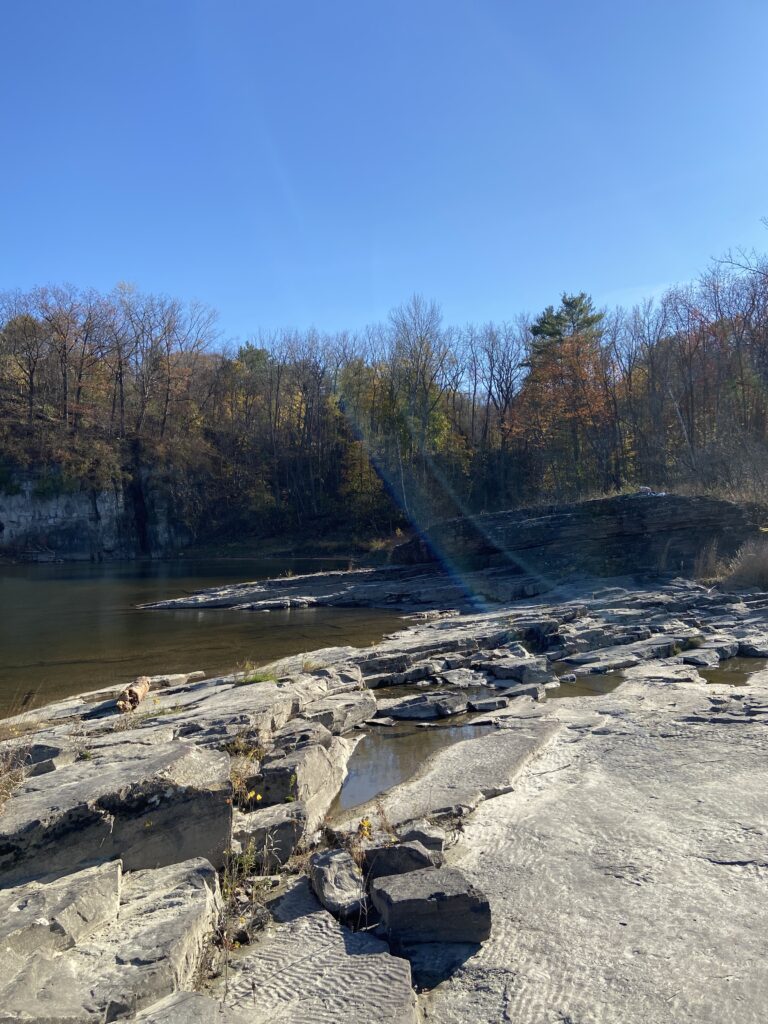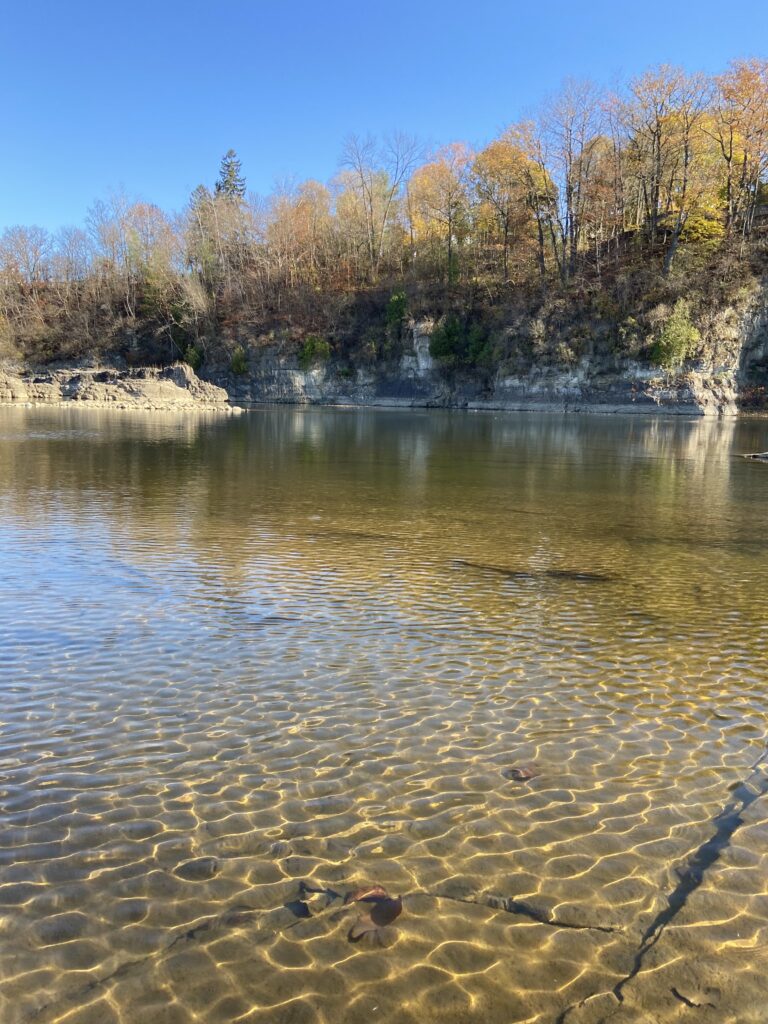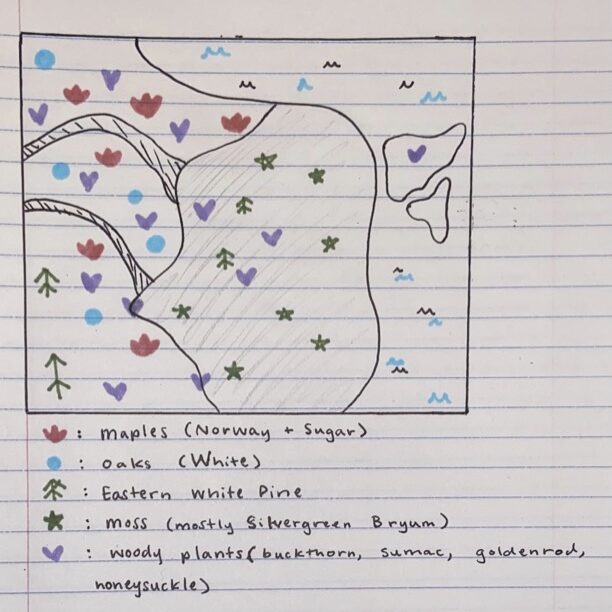Happy November! Or should I say (happy?) 95th anniversary of the Great Flood of 1927. This afternoon I shouldered my sturdy little backpack filled with pounds of chemistry homework and headed down the hill from campus to visit Salmon Hole.

The difference in the woods and by the water was striking compared to when I visited only a few weeks ago. The river is a lot lower, exposing an entire swath of rock that I could walk to the middle of the river on. Most of the conifers have lost their leaves, with a few yellow Norway maple leaves hanging on here and there. The exception is certainly the white oak, which still had most of its dark red leaves. I observed similar patterns in the smaller woody plants. Most of the taller grasses and goldenrods had turned brown, while most of the buckthorn had green or red leaves. Nestled in the cracks of the rocks, the Silvergreen Bryum moss was still its signature, vibrant green.

For fifteen minutes, I sat on the rocks facing the river, watching it flow into the Hole and make its way west to Lake Champlain. I heard the river flowing over rocks, although it sounded far away, and it mingled with the rush of cars driving by on the bridge. I could see the river’s muddy bottom through clear water that looked almost green under the sunlight. I noticed that it was quieter than the last time I visited. There was nobody there besides me, no swimmers or people fishing. I heard the wind make its way through the thick brown grasses, accompanied by the crickets chirping softly below a plane taking off from the airport not far down the road. There were birds singing that I don’t recall from my first visit. Not being a bird aficionado myself, I turned to the Cornell Lab’s bird identification app, Merlin, which informed me that the calls I was hearing were from a Dark-eyed Junco and a Black-capped Chickadee.
Once I got home, I sketched a little map of this place I’ve been visiting. In truth, this is a pretty large area, but about half of it is rock, and I wanted to observe both the phenological changes in the river and the forest.

✌️